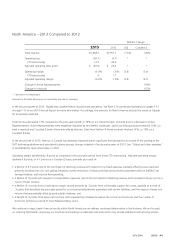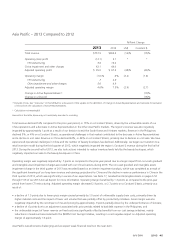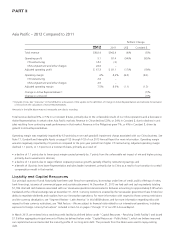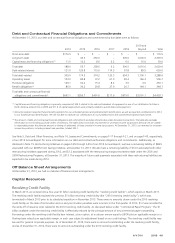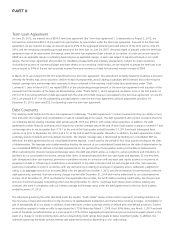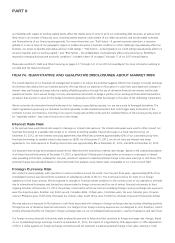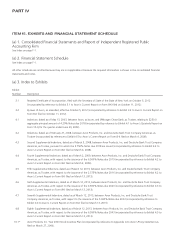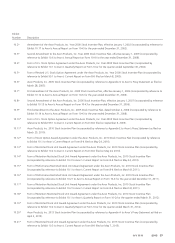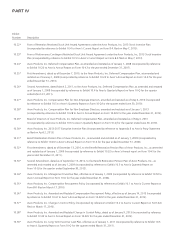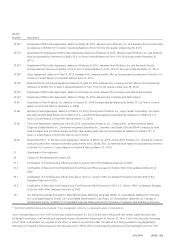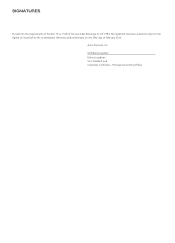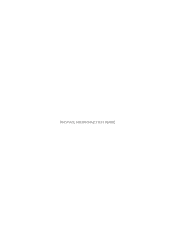Avon 2013 Annual Report Download - page 60
Download and view the complete annual report
Please find page 60 of the 2013 Avon annual report below. You can navigate through the pages in the report by either clicking on the pages listed below, or by using the keyword search tool below to find specific information within the annual report.PART II
our flexibility with respect to working capital needs, affect the market price of some or all of our outstanding debt securities, as well as most
likely result in an increase in financing costs, including interest expense under certain of our debt instruments, and less favorable covenants
and financial terms of our financing arrangements. For more information, see “Risk Factors – A general economic downturn, a recession
globally or in one or more of our geographic regions or sudden disruption in business conditions or other challenges may adversely affect our
business, our access to liquidity and capital, and our credit ratings,” “Risk Factors – A downgrade in our credit ratings may adversely affect our
access to liquidity, and our working capital,” and “Risk Factors – Our indebtedness could adversely affect us by reducing our flexibility to
respond to changing business and economic conditions” included in Item 1A on pages 7 through 17 of our 2013 Annual Report.
Please also see Note 5, Debt and Other Financing on pages F-17 through F-21 of our 2013 Annual Report for more information relating to
our debt and the maturities thereof.
ITEM 7A. QUANTITATIVE AND QUALITATIVE DISCLOSURES ABOUT MARKET RISK
The overall objective of our financial risk management program is to reduce the potential negative effects from changes in foreign exchange
and interest rates arising from our business activities. We may reduce our exposure to fluctuations in cash flows associated with changes in
interest rates and foreign exchange rates by creating offsetting positions through the use of derivative financial instruments and through
operational means. Since we use foreign currency rate-sensitive instruments to hedge a portion of our existing and forecasted transactions,
we expect that any loss in value for the hedge instruments generally would be offset by changes in the value of the underlying transactions.
We do not enter into derivative financial instruments for trading or speculative purposes, nor are we a party to leveraged derivatives. The
master agreements governing our derivative contracts generally contain standard provisions that could trigger early termination of the
contracts in some circumstances, including if we were to merge with another entity and the creditworthiness of the surviving entity were to
be “materially weaker” than that of Avon prior to the merger.
Interest Rate Risk
In the past we have used interest-rate swaps to manage our interest rate exposure. The interest-rate swaps were used to either convert our
fixed rate borrowing to a variable interest rate or to unwind an existing variable interest-rate swap on a fixed rate borrowing. At
December 31, 2012, we held interest rate swap agreements that effectively converted approximately 62% of our outstanding long-term,
fixed-rate borrowings to variable interest rates based on LIBOR. As of December 31, 2013, we do not have any interest-rate swap
agreements. Our total exposure to floating interest rates was approximately 8% at December 31, 2013, and 69% at December 31, 2012.
Our long-term borrowings were analyzed at year-end to determine their sensitivity to interest rate changes. Based on the outstanding balance
of all these financial instruments at December 31, 2013, a hypothetical 50-basis-point change (either an increase or a decrease) in interest
rates prevailing at that date, sustained for one year, would not represent a material potential change in fair value, earnings or cash flows. This
potential change was calculated based on discounted cash flow analyses using interest rates comparable to our current cost of debt.
Foreign Currency Risk
We conduct business globally, with operations in various locations around the world. Over the past three years, approximately 87% of our
consolidated revenue was derived from operations of subsidiaries outside of the U.S. The functional currency for most of our foreign
operations is their local currency. We are exposed to changes in financial market conditions in the normal course of our operations, primarily
due to international businesses and transactions denominated in foreign currencies and the use of various financial instruments to fund
ongoing activities. At December 31, 2013, the primary currencies for which we had net underlying foreign currency exchange rate exposures
were the Argentine peso, Brazilian real, British pound, Canadian dollar, Chilean peso, Colombian peso, the euro, Mexican peso, Peruvian
new sol, Philippine peso, Polish zloty, Romanian leu, Russian ruble, South Africa rand, Turkish lira, Ukranian hryvna and Venezuelan bolívar.
We may reduce our exposure to fluctuations in cash flows associated with changes in foreign exchange rates by creating offsetting positions
through the use of derivative financial instruments. Our hedges of our foreign currency exposure are not designed to, and, therefore, cannot
entirely eliminate the effect of changes in foreign exchange rates on our consolidated financial position, results of operations and cash flows.
Our foreign-currency financial instruments were analyzed at year-end to determine their sensitivity to foreign exchange rate changes. Based
on our outstanding foreign exchange contracts at December 31, 2013, the impact of a hypothetical 10% appreciation or 10% depreciation
of the U.S. dollar against our foreign exchange contracts would not represent a material potential change in fair value, earnings or cash



